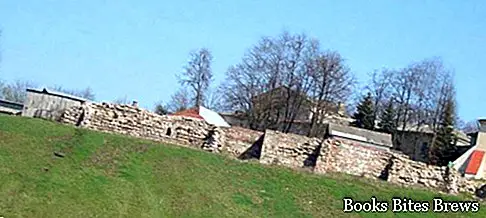What to see in Grodno, itinerary including the main monuments and places of interest, including the remains of the Old Castle, the New Castle and the Church of Boris and Gleb.
Tourist information
Also called Grodno and one of the oldest cities in Belarus, Hrodna is located on the Neman River, near the borders with Lithuania and Poland.
Founded in 1127, in the twelfth century it was part of the Grand Duchy of Lithuania, becoming the residence of the Grand Duke.
Starting from 1569, following the birth of the Polish-Lithuanian Confederation, originating from the merger between the Kingdom of Poland and the Grand Duchy of Lithuania, the city of Grodno gained importance, being on the border between the two States.
Stefan Bátory, famous King of Poland and Grand Duke of Lithuania, had the castle rebuilt, where he died in 1586.
Between the seventeenth and eighteenth centuries, Polish diets took place in Grodno, before annexation to the Russian Empire.
In 1812 it was occupied by the Napoleonic army, but was freed in the same year.
In 1915 it was subjected to the occupation of the German army.
From 1920 to 1939 it was part of Poland, undergoing the occupation of the Nazi army, until it was reconquered by the Soviet army.
Polish citizens make up the second largest ethnic group in the city, after the Belarusians, despite the fact that in the years when the city belonged to the Soviet Union, many Polish inhabitants were expelled or forced to flee to Poland.
After the disintegration of the Soviet Union, Hrodna has been part of Belarus since 1991.
Recommended readings- Minsk (Belarus): what to see in the capital
- Belarus: what to see in the Republic of Belarus
- Grodno (Belarus): what to see in the ancient city
What see
In the historical center of Hrodna there are well-preserved ancient buildings and beautiful parks.
From the Soviet square, along Zamkovaya street, the castle road, you reach the area where the two royal castles are located.
The old Castle constitutes Grodno's first defensive construction, built on the bank of the Neman River in the 11th century.
The original fortification was transformed in the following centuries, becoming the residence of King Stefan Batory in the second half of the sixteenth century.
During the battle of the Northern War, which took place in the eighteenth century, the castle suffered serious damage, which is why in 1737 a new one was built as a royal residence, near the remains of the old one.
Among the religious buildings of the city are distinguished:
- the seventeenth-century Catholic Cathedral of San Francesco Saverio, in Baroque style,
- the Orthodox Cathedral of Our Lady of Health, from the early twentieth century,
- the Great Choral Synagogue, built in an eclectic style from 1902 to 1905, in place of a previous sixteenth century wooden construction.
It is the only building of Jewish worship left in the city, since the Jewish community, which was once very large, has greatly reduced.
The church of Boris and Gleb, built in 1180 on the bank of the Neman river, in front of the castle hill, in the territory of the primitive settlement of Kalozha, represents a precious example of the ancient typical architecture of Rutena Nera, a historical region to which it also belonged the city of Grodno.




